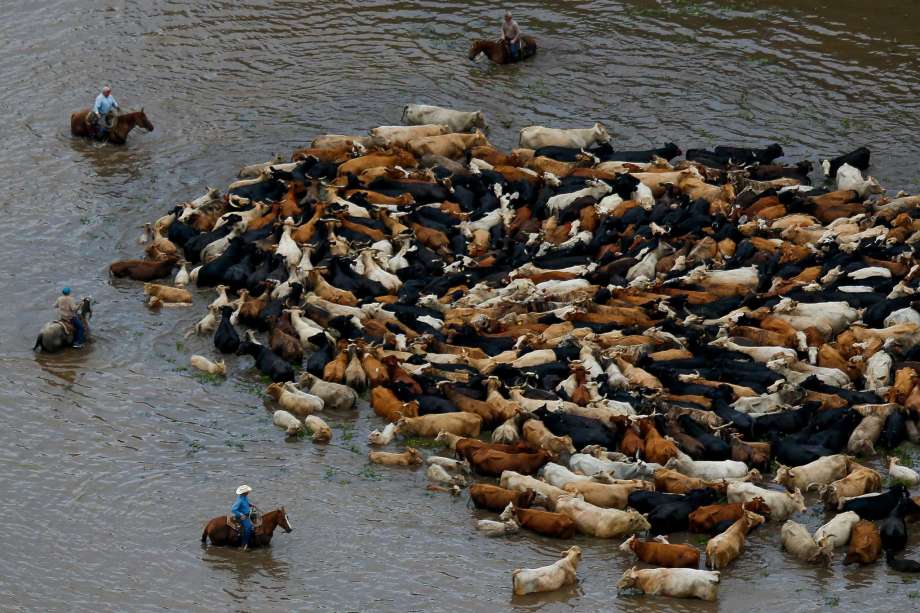U.S. Farm Belt Slammed by Floods and Heavy Snow

A harsh late winter storm broadsided a vast swathe of the U.S. agriculture industry this week as heavy snow closed roads and buried cattle in the Plains while excessive rain flooded Midwest farm fields and swamped grain elevators
Reuters
A “bomb cyclone” hurled hurricane-force winds, sparked tornadoes and dumped heavy snow and rain across the Plains and western Midwest on its march across the United States this week.
Recovery from the storm is expected to take days or weeks, if not longer. Prolonged supply disruptions could rattle cattle, hog and feed grain markets around the region and futures on the Chicago Board of Trade and Chicago Mercantile Exchange.
Archer Daniels Midland Co was forced to shutter its massive Columbus, Nebraska, corn processing facility due to flooding. The plant, which produces corn-based ethanol biofuel, is one of the largest in the world.
“The floods have posed challenges for ranchers as well as cattle feedlot operators who have already struggled through a long winter”
“Right now, we do not have rail or road access to the facility because of the high water. We do not have an estimate yet on when we will be able to resume normal operations,” Chris Cuddy, president of ADM’s carbohydrate solutions business said in an emailed statement.
How soon the facility will reopen will depend on the extent of the damage and how quickly floodwaters recede, he said.
Rival agribusiness Cargill Inc closed its Council Bluffs, Iowa, and Albion, Nebraska, grain elevators at least through the weekend due to flooding, according to its website.
In Albion, flooding also shuttered an adjacent ethanol plant operated by Valero Energy Corp, according to a Chicago grains trader. Valero could not be immediately reached for comment.
Nebraska State Patrol posted photos and video on Twitter of dozens of cattle stranded on tiny islands in the flood-swollen Platte River near Fremont, Nebraska.
The floods have posed challenges for ranchers as well as cattle feedlot operators who have already struggled through a long winter, with Omaha, Nebraska, recording its snowiest winter on record, according to the High Plains Regional Climate Center. Nebraska is the No. 2 cattle-producing state after Texas.
“You’ve got stranded cattle, and a lot of flooding in the feedlots. You’ve got just a sea of mud, and it’s affecting performance,” said Alan Brugler, president of Omaha-based advisory service Brugler Marketing and Management.
The cattle “are not gaining weight, they’ve got a lot of mud on them. It is definitely hurting the feedlot guys in terms of their efficiency,” he said.
Further north in South Dakota, grazing cattle were slammed by heavy snow, with some cattle entirely buried.












